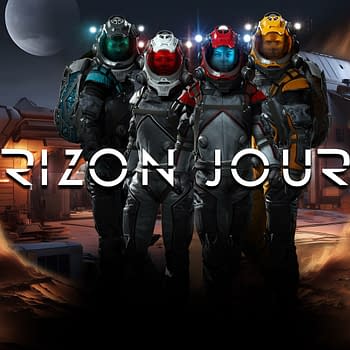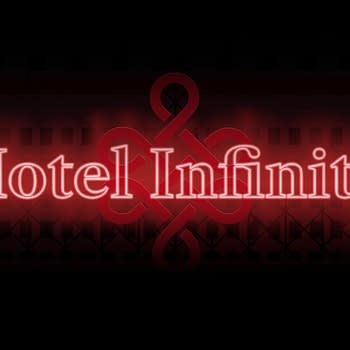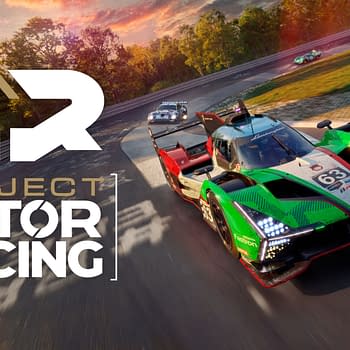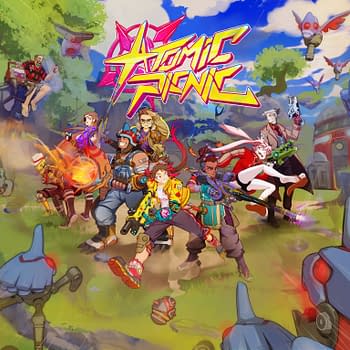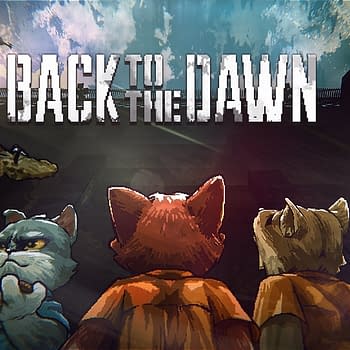Posted in: Final Fantasy, Final Fantasy XIV, Games, Review, Square Enix, Video Games | Tagged: ff, FFXIV, Final Fantasy, Final Fantasy XIV, Final Fantasy XIV: Shadowbringers, Square Enix
[REVIEW] Final Fantasy XIV: Shadowbringers Plays it too Safe
[rwp_box_recap id="0"]
Final Fantasy XIV's brand new expansion, Shadowbringers, does a whole hell of a lot for the game to move its central story forward, which is a double-edged sword. The game's central conflict is between the Warrior of Light, Scions of the Seventh Dawn and their immortal adversaries The Ascians. The expansion brings that conflict back to the fore, for the first time since A Realm Reborn. Sure, the Ascians have been in the background of the game even with the Heavensward and Stormblood expansions, but Shadowbrings makes that conflict the central point of the narrative again. So, in a sense, FFXIV has returned to it's roots with this one.
While the stakes are always high any time the Ascians are involved, the fate of two worlds are at stake in this expansion. So there's certainly a lot of narrative drama.
Additionally, the game adds two new playable races, two new combat jobs, and a revamped battle system.
So it's a massive, massive content dump and that makes it an absolute necessity for fans of the MMO.
![[REVIEW] Final Fantasy XIV: Shadowbringers Plays it too Safe](https://mlpnk72yciwc.i.optimole.com/cqhiHLc.IIZS~2ef73/w:600/h:337/q:75/https://bleedingcool.com/wp-content/uploads/2018/11/unnamed-2-4.jpg)
The battle system, while bringing many necessary changes to the game, simplifies a ton of jobs. And in doing so, strips some of the nuance out of the various jobs. The most affected by the battle system changes were healers, who got a massive shakeup in their meta. Healers lost their early 10% damage down shield ability, Protect. While this just means that Astrologians and Scholars need to rely more heavily on their own mitigation skills, it leaves White Mages without any mitigation until after level 70. And while the healer changes were crafted to force a more "pure healing role" onto the healer jobs, it's left white mages as nothing more than cure-bots. And while all healers are salty about their loss of ability to switch up and DPS every now and again, the change seems a little too severe.
Astrologians have brand-new cards, which will take some getting used to, though they all seem a bit too one-note at the moment. While memorizing the effects of several different cards is asking a bit of an extra step for Astrologian players, having all of the cards provide a Balance-like DPS buff is a bit too simple.
Tanks also saw some major changes, along with the addition of a new tank job, Gunbreaker. While Gunbreaker is an absolutely fun tank job to play, the new battle system changes have managed to make all four tanks feel a little too similar. Sure, Warrior is still the DPS tank, Paladin is still the best at mitigation, but both Dark Knight and Gunbreaker have solid DPS and integral mitigation. So they're a bit middle-of-the-road. Not that any of them are impossible to play, but the new battle system means none of them can stand alone nearly as well as they did from patch 4.1 onward in the Stormblood cycle.
One of my biggest issues with the Stormblood battle system changes was the balance between Warriors and Scholars. With Shadowbringers, we've got the exact opposite problem. Scholars do a solid job of keeping all four tanks alive, but White Mages are a bit of a death sentence. Especially if you have two WHMs in the end-game extreme trials.
The changes for the DPS roles have mostly been positive. It's much easier for Summoners to control their pets, even with the changes to the Titan-Egi summon. Mechanist feels more fluid and, well, mechanical than it used to. And while the overall synergies between DPS roles have been diminished, they haven't been hit too hard.
So while the battle system changes are major, they're not too crushing outside of end-game. And we'll likely see major modifications coming in the next few patches.
Which brings us to the second major offering of Shadowbringers: the story.
For me, the action of Final Fantasy XIV has always been best when set by the villains of the story. Partly because I honestly don't care about the majority of the Scions of the Seventh Dawn, but also because a good villain can make or break a game.
While plenty of fans adore the Scions, I've always found them to be more akin to props than proper characters. They often exist to provide lengthy explanations about the various workings of the world and its aether, which leads to long bits of expository dialogue and little personality. Because the third expansion focuses on the Scions and their conflict with the Ascians over the fate of a brand new world, they become the primary supporting characters for the player character. And that's often not for the best. While having a few of them at a time is tolerable, see Heavensward and Stormblood, the whole cast can be a bit of a drag. Their apparent deaths during A Realm Reborn and the Seventh Astral Era cycles are, arguably, their best moments overall.
Unfortunately for Final Fantasy XIV, Vauthry is too much a caricature to be compelling as anything other than meme fodder. While Emet-Selch is a fantastical trickster and an intriguing character, he's hard to make into a primary villain. His motivations are difficult to get behind, after all, the Ascians pride themselves on being inscrutable. Emet-Selch may not wear a literal mask like Lahabrea, Nabrales, or Elidibus, but for the majority of the expansion, his actions are hidden behind a veil that's difficult to pierce.
When Emet-Selch does decide to bring the player in on his motivations, its all wrapped up in a nice bow of spooky space aether magics, which leads to lengthy cutscenes that explain how the world was shattered into The Source and it's thirteen reflections. Which can be great if you love the lore of the game. But if you don't, it honestly drags. Which is the biggest problem with the Ascians as primary antagonists in the first place. So much of their motivation is tied up in the most obscure aspects of FFXIV lore that they aren't interesting.
And getting around the way the player is able to freely teleport between the Source areas and The First is a hilarious example of game devs having to do some careful lore footwork to get around previous plot-points without invalidating old content. After all, every other character (including the Scions themselves) who travels between the worlds needs to be incorporeal in some way. The original Warriors of Darkness from the First were, in fact, dead when they crossed over. But not the Warrior of Light, no. Can't trap the player in new areas with no way to get back. That just doesn't work in an MMO.
So instead we get some hand-waving and psuedo-scientific explanations involving aether manipulation and very little substance.
As for the story itself, well. Without getting into spoilers, the main campaign is irritatingly formulaic. The player and Scions decide to become the Warriors of Darkness and free the First from a series of Light Wardens in order to return a day-night cycle to the world. And that's exactly what they do. Things only really move off those rails in the final stretch of the campaign. And that's a pretty terrible story format. The denumount should be combination of the various story threads that have lead up to the final moments, but Shadowbringers spends too much time doing the same old thing. The final few hours of content are the most fascinating pieces of the story, and they're almost entirely level 80 quests. So, you only get to the good bits once you've hit level cap. And that's a pretty terrible design.
![[REVIEW] Final Fantasy XIV: Shadowbringers Plays it too Safe](https://mlpnk72yciwc.i.optimole.com/cqhiHLc.IIZS~2ef73/w:600/h:338/q:75/https://bleedingcool.com/wp-content/uploads/2019/02/FFXIV_PUB_FANFESTIVAL_2019_PARIS_09.jpg)
And as for being the Warriors of Darkness, the player and the Scions do very, very little of that. In fact, they honestly continue to do what they've always done: combat the major threats to the world in order, diametrically opposed to the Ascians. Sure, on The First, the Ascian plan involved overrunning the world with a Flood of Light, but that doesn't really make the player a Warrior of Darkness just for killing re-skinned versions of voidsent enemies.
What Shadowbringers does unequivocally well, however, are the two new jobs. Dancer and Gunbreaker are absolutely fun to play around with. And they mesh well with the existing jobs, even if they have managed to alter the matchmaking queues for dungeons, raids, and trials.
However, between making the various combat roles oddly homogenous, being saddled with less-than-stellar villains, and getting bogged down in history lessons, the new dungeons and trials are inexplicably fun. The instanced content adds a few fascinating new battle mechanics, and the end-game versions only add to that. So the gameplay is in a pretty solid place overall despite a few problems with the battle system.
The narrative may not be my favorite, but it's far from the worst. Shadowbringers is still leagues above the Seventh Astral Era, and it's more contained than A Realm Reborn. As for where it leaves off, well. Things seem to be going in an interesting direction for the post-launch content, and so I'm excited to see how the Shadowbringers story evolves. It's base is, unfortunately, too static and too safe.


![[REVIEW] Final Fantasy XIV: Shadowbringers Plays it too Safe](https://mlpnk72yciwc.i.optimole.com/cqhiHLc.IIZS~2ef73/w:600/h:338/q:75/https://bleedingcool.com/wp-content/uploads/2019/07/ffxiv_pub_e3_2019_04.jpg)
![[REVIEW] Final Fantasy XIV: Shadowbringers Plays it too Safe](https://mlpnk72yciwc.i.optimole.com/cqhiHLc.IIZS~2ef73/w:600/h:338/q:75/https://bleedingcool.com/wp-content/uploads/2019/07/ffxiv_pub_e3_2019_10.jpg)


![[REVIEW] "Gang Beasts" is Zany Party Madness](https://mlpnk72yciwc.i.optimole.com/cqhiHLc.IIZS~2ef73/w:350/h:350/q:75/rt:fill/g:ce/https://bleedingcool.com/wp-content/uploads/2019/09/gang-beasts-7-350x350.jpg)
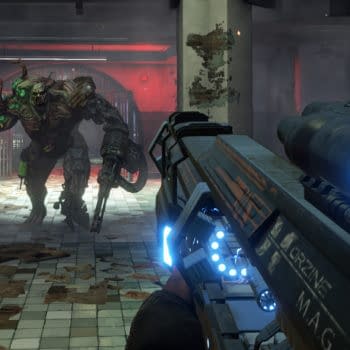
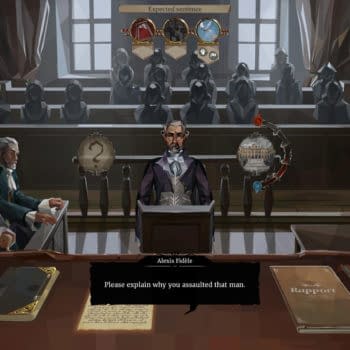
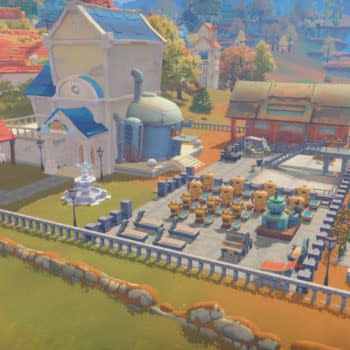
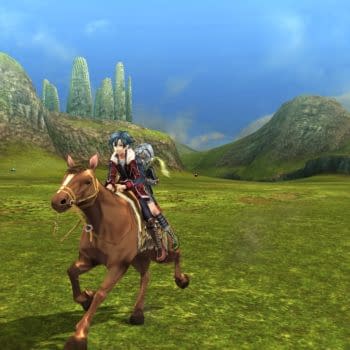
![[REVIEW] "Divinity: Original Sin II" Definitive Edition is Almost Perfect](https://mlpnk72yciwc.i.optimole.com/cqhiHLc.IIZS~2ef73/w:350/h:350/q:75/rt:fill/g:ce/https://bleedingcool.com/wp-content/uploads/2018/08/Divinity-Original-Sin-2-Definitive-Edition-art-350x350.jpg)
